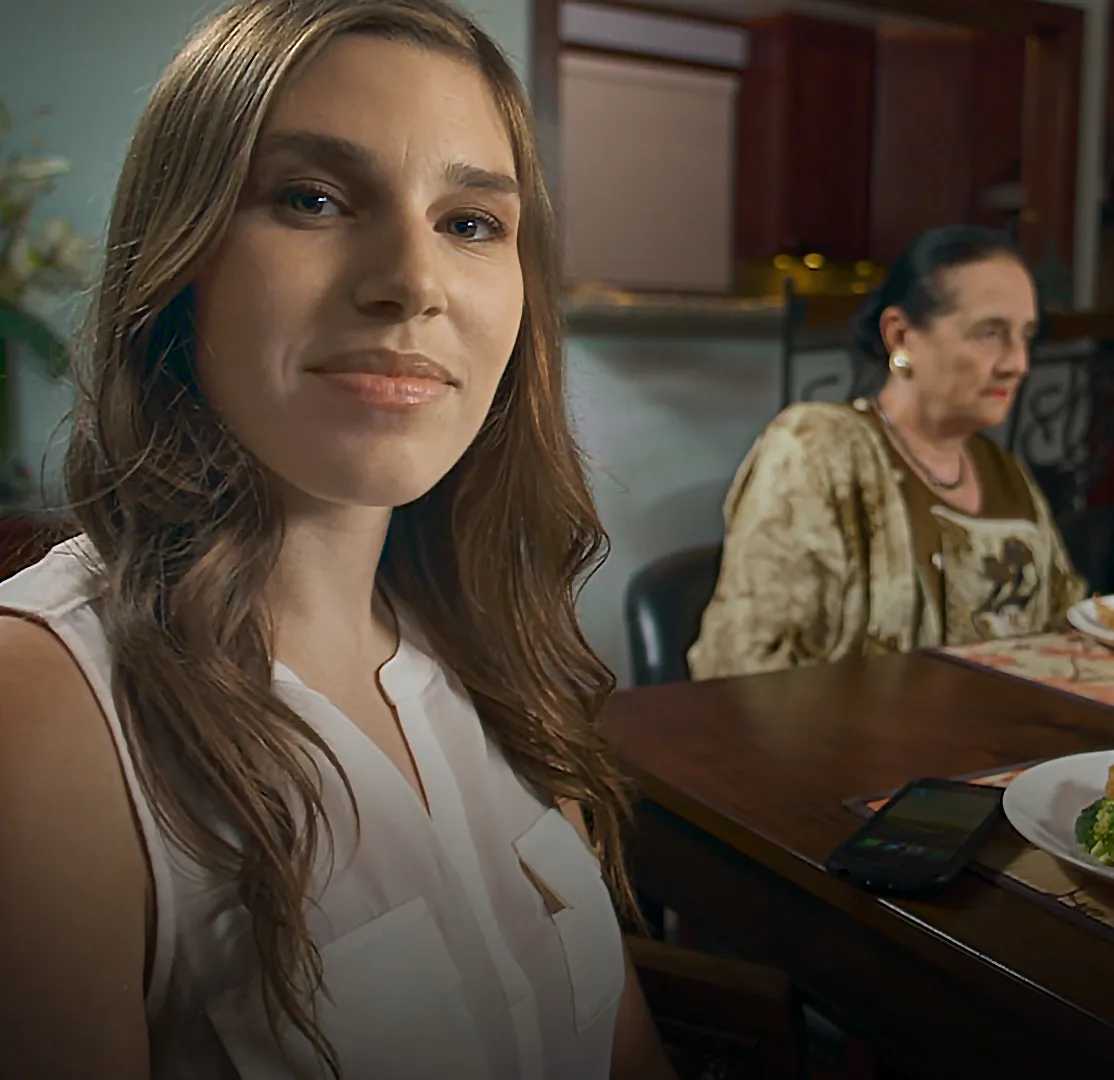Halation is an effect that occurs only with film stock, never in digital cinema. To understand it, you have to peel back some of the layers - quite literally - and understand some physics.
How Does Halation Happen?
Color film stock is composed of many different layers - but speaking on simple terms, color film usually has 3 layers of differently color-sensitive emulsion and an anti-halation backing.

Anatomy of Halation: the incoming light penetrates blue, green and red layers of the film stock, then only partially gets absorbed by the anti-halation backing. The strongest rays bounce back into the red layer and create halation.
The color layers are self-explanatory; all of them consist of silver halide particles that are sensitive to a certain wavelength of light, get exposed by the process and turn the photon energy entirely into chemical energy (which darkens the particles as they absorb the light), thus creating a 3-layered "picture". When those layers are combined, they result in a color negative, and when you print them to a positive, the color image represents the reality that was in front of the lens.
Now, that's all pretty Film School 101. But what about this mysterious last layer, the anti-halation backing? Well - when you have a strong source of light (such as outside daylight when shooting inside), it penetrates all three layers and only gets partially absorbed along its path - but it is so strong that it maxes out the absorption abilities of the particles. That results in what we call "blown out" areas of the image, usually completely white.
But since the energy wasn't absorbed entirely, that left-over light would now hit the semi-shiny mechanics of the camera body, and scatter back into the film emulsion in a chaotic way. This diffuse reflection is usually undesirable and called "Halation" - it creates a halo-like image within the image.
So, to avoid this, film manufacturers added an anti-halation layer that had the role to absorb all that left-over light. Well, not entirely...Really strong light rays are so strong that they partially bounce off the anti-halation layer and scatter back into the last layer, namely the red one. This is the reason for the distinct redness of "classic" film halation.
Steve Yedlin has a nice example of Halation in his "On Color Science" article, and here's another one.
Imitating Halation in Digital Cinema
Well, digital cinema has a very different image acquisition architecture from film stock. Most sensors use a Bayer-pattern where color sensitive pieces are arranged next to each other rather than stacks. The only exception is the Foveon X3 series of sensors which feature layered stacks, but due to the pixel nature of the sensor, there's no significant cross-pixel "pollution" as color film.
So is halation possible with digital? Black ProMist and similar diffusion filters offer an RGB diffusion around bright highlights, so they're the closest thing to halation you can get in-camera. Here's a video from Tiffen to illustrate that effect:
But true, red halation is not possible digitally with simple on-camera filtration. So - are you stuck never being able to "get" it digitally?Not really. There is a way, namely in post production - as with most film properties that digital cinematography wants to imitate from time to time.
Prodigium's Solution to Digital Halation
One of our specialties at Prodigium are Coloring Services for feature films, commercials and shorts. We have spent about a year researching halation and the properties needed for its digital imitation.
Currently, we only offer this "digital halation" as a service (i.e. we custom-halate your footage by hand) - we might roll out a plug-in or similar in the future. If you are curious about trying to imitate our results, we'll give you a hint: It has to do with keying the brightest of lights and blurring them into the reds - but there's a lot more finesse going on to deliver a convincing result.
Hopefully this insight on digital halation was educational and got you a bit closer to understanding the differences between digital and film. You might want to read more from Our Insights, or check out our Coloring Portfolio. Cheers!









